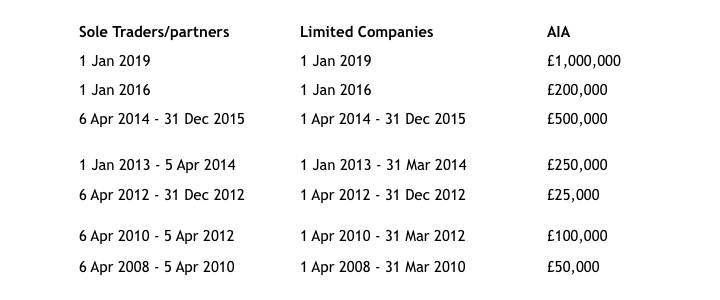Tax Planning and your Personal Allowance
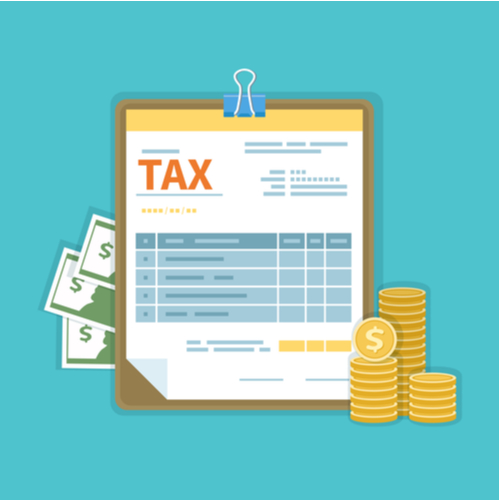 Let’s be clear – tax planning doesn’t automatically mean tax avoidance.
Let’s be clear – tax planning doesn’t automatically mean tax avoidance.
Personal tax planning is the process where your chartered accountant uses their skill and experience, along with legal, government-approved methods to reduce your tax bill. There are no legal consequences for using proper tax planning.
Tax avoidance, on the other hand, involves ‘bending the rules of the tax system to gain a tax advantage that Parliament never intended’ as defined by Gov.uk. It must be noted that HMRC does crackdown on tax avoidance and you can read the related articles ‘HMRC legal powers’ and ‘How does HMRC expose tax evasion and avoidance’ by clicking on the appropriate link.
At Tax Agility, our chartered accountants have been helping individuals with tax planning for decades but never tax avoidance. Our personal tax planning services include but are not limited to income tax, trusts and estates, inheritance tax and capital gains tax. We work with you to create a strategic tax plan that allows you to earn, save, protect and invest your money as efficiently as possible.
Personal allowance
For tax years 5 April 2019 to 6 April 2020 and 5 April 2020 to 6 April 2021, your Personal Allowance is set at £12,500. What it means is you can earn up to £12,500 without paying any income tax.
If you earn between £12,500 and £37,500 then you will fall into the Basic Rate band where you pay 20% tax.
For most people on PAYE, the relevancy between personal allowance and tax planning seems trivial. But the more you earn, you need to be aware that there is the cost of losing tax breaks like marriage allowance, child benefit tax break, among others. It is best to speak to an experienced tax accountant who can provide specific advice pertaining to your circumstances.
Capital Gains tax allowance
For those who intend to sell some shares or a second home, you would want to know about Capital Gains tax allowance. For the tax year 2019-20, the capital gains tax allowance is £12,000 for individuals and £24,000 for married couples and civil partners.
How much capital gains tax you pay depends upon your tax bracket – if you pay a higher rate income tax, you are likely to pay more capital gains tax, but if you pay a basic rate income tax, there are formulas to calculate how much you pay. Contact us if you are unsure.
Pensions
Using pensions to reduce your taxable income is a common method for those looking to pay less tax and save for the future.
A simple example is that if you’re a basic rate taxpayer and you pay £80 into your pension, you get an added £20 from basic rate tax relief.
Once you reach the age of 55, you can withdraw 25% of your pension tax-free. Do note that there are scammers out there looking to take advantage of your interest in this, so be mindful.
ISAs
Individual Savings Accounts (ISAs) are attractive because you can invest up to £20,000 per tax year and don’t have to pay tax on the money you make from your ISA investments. How much you tax bill you can reduce depends on the type of ISA you have.
Pay less tax if you’re self-employed
If you have set yourself up as a contractor, there are certain business expenses which you can deduct from your tax bills. However, it must be said that every contractor is unique, so the tax advice you get should be personalised and not one-size-fits-all, as explained in our post ‘Eight top tips for choosing a contractor accountant’. At Tax Agility, we are the contractor accountants you’re looking for, so call us today to arrange a complimentary, no obligation meeting.
Tax Agility can help with your tax planning
If you’re looking to reduce your tax bill, and have questions on capital gains tax, inheritance tax and other personal tax matters, contact the chartered accountants at Tax Agility. To find out more, get in touch on 020 8108 0090 or fill out our Online Form.
This post is intended to provide information of general interest about current business/ accounting issues. It should not replace professional advice tailored to your specific circumstances.
If you found this useful, you might also enjoy:
We’ve updated our accountants for doctors page
 With a proven track record working with salaried GPs, locums, consultants and GPs running their own practice, our team of specialist accountants for doctors in London have been delivering a complete range of accounting services to medical professionals and keeping their financial health in check. This is why we have recently updated our service page with comprehensive no-nonsense advice that you can count on.
With a proven track record working with salaried GPs, locums, consultants and GPs running their own practice, our team of specialist accountants for doctors in London have been delivering a complete range of accounting services to medical professionals and keeping their financial health in check. This is why we have recently updated our service page with comprehensive no-nonsense advice that you can count on.
It must be stressed that we provide a FREE initial consultation to understand your situation first before we can put together services that can fully address your needs. The services that best fit you can be one or a combination of the following:
- A business structure that is best for your current situation (IR35, limited, partnership to name but a few).
- Proactive tax advice to minimise your tax obligation.
- VAT scheme that’s best suitable for your business and VAT returns.
- Corporate tax returns.
- Company House Annual returns.
- PAYE returns.
- Ongoing consultations.
On our specialist accountants for doctors page, you can find information pertaining to:
- How our accountants can help each type of medical professional – from salaried GPs, locums, consultants, GP running their private practice to private healthcare providers
- Tax questions concerning medical professionals
- Making Tax Digital for doctors
Contact Tax Agility, independent and trusted accountants for doctors and medical professionals today
We’re specialist doctors accountants in London that will go the extra mile to help you manage your accounting responsibilities, understand tax and VAT returns and much more. Contact one of our specialist accountants for doctors and medical professionals today on 020 8108 0090. Alternatively, you can send us a message via our Contact Form.
What is IR35? A brief guide to the IR35 legislation
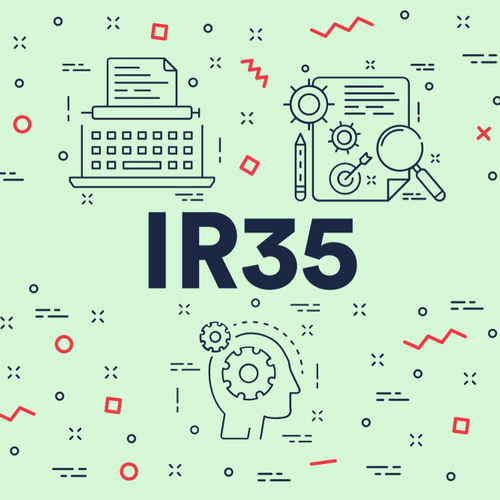
IR35 is a tax legislation designed to mitigate tax avoidance by workers, particularly contractors, who supply their services through the use of intermediaries.
Introduced in 2000 by HMRC, IR35 is effectively a means of identifying individuals who are providing clients with a service under an intermediary, such as a ‘personal service company’ (usually in the form of a limited company), that would normally be classified as regular workers, known as ‘disguised employees’, without the existence of said intermediary.
Determining whether you’re operating inside or outside the scope of IR35 is mind-bogglingly complex and requires a thorough understanding of your unique situations. For the purposes of this article, our team of London’s local accountants for contractors aims to explain the various requirements for contractors under IR35, as well as gives an outline of the best practices for ensuring that you aren’t categorised as a ‘disguised employee’ under IR35’s classifications. Information given in this post should not replace professional advice tailored to your specific circumstances.
Why was IR35 introduced?
Previously, companies who engaged these disguised employees saved a significant amount of money as they didn’t have to pay employers’ National Insurance Contributions, nor provide any employment benefits.
On the other hand, contractors operating through a personal service company could also minimise their tax obligation as they were more inclined to split the income between salary and dividends. Dividends aren’t subject to National Insurance Contributions and also taxed at a lower rate, resulting in contractors paying less taxes and getting a higher take-home pay than a normal employee would.
It was a win-win scenario for companies who engaged contractors and also for contractors themselves. However, because HMRC did lose out on tax revenue they would otherwise receive, they had to close the loophole by introducing IR35.
In short, IR35 legislation was effected as a mechanism for cutting down on individuals wrongfully claiming tax advantages as contractors (or through other intermediary means) when they would normally otherwise be classified as regular employees.
In April 2000, IR35 became effective for small businesses supplying clients with contractor services and aimed to better establish the conditions by which contractor-client relationships exist for tax purposes. Despite their best efforts, the Government has been widely criticised for IR35, particularly with respect to its implementation and the impacts it can have for legitimate contractors and their small companies.
Am I at risk of coming under IR35?
Anyone who works as a contractor is potentially at risk of being categorised as a ‘disguised employee’ under IR35, and if you are deemed to fall inside this definition by HMRC, you will face some severe tax implications.
The problem with IR35 is that there is no definitive guideline that stipulates the conditions of a ‘breach’ so to speak, and as the issue is contractual in its nature, anyone investigating on behalf of HMRC is required to make a notional judgment based on the relationship between the company and the contractor rather than on the ‘written’ agreement.
As such, it is often difficult to determine whether you’re categorised as a ‘disguised employee’ in certain circumstances. Typically, HMRC looks at the working arrangement and uses these three principles (aka tests of employment) to determine the employment status of an individual.
Principle 1: Control
This refers to how much control the company has over you the contractor, from what you do, how you do it, when you start and finish it to where you complete it. If the client requires you to come in from 9 am to 5 pm every weekday for a specific period of time to finish a series of tasks, then HMRC is likely to classify you as a normal employee and therefore IR35 is applicable.
Principle 2: Substitution
A normal employee cannot go out to source for an individual to complete their work for them but if you are a genuine contractor, you should be able to send a substitute to undertake the work on your behalf, provided that your client is reasonably satisfied that the proposed substitute has the right skillset and qualifications to undertake and complete the work.
Principle 3: Mutuality of obligation
This concept hinges on the question: is there a degree of obligation with respect to the employer supplying the work and the worker accepting this offer? If you are a genuine contractor, you must have the right to terminate the contract early if you choose to.
Understanding these principles can offer an insight into circumstances where a contractor may come under IR35 categorisation, however, these are not exhaustive and there are other factors that can be taken into account when making a judgment. For example, HMRC may check if you receive any employment benefits or if you use their equipment to complete your work to name but a few.
We’re specialist contractor accountants
Essentially, it’s important for a contractor to consult a specialist contractor accountant like Tax Agility to better ascertain where they sit with respect to this legislation and whether they may be required to pay more tax as a result. While there are a number of IR35 calculators that might be able to give a rough estimate, it’s always advisable to go to a professional. Call us on 020 8108 0090 today or send us a message via our Contact Form. We offer the first consultation for free in order to understand your circumstances and provide you with the best possible advice with regards to your contractor work.
For more information, check out our contractor pages:
- What are the pros and cons of contracting?
- What does the IR35 legislation mean?
- Tax advice for contractors
- Important dates and deadlines for contractors
If you liked this post, you might also like:
- How Xero can help contractors in the UK
- How does HMRC expose tax evasion and avoidance?
- Tax planning tips for self-employed contractors
The Enterprise Management Incentive scheme
 The Enterprise Management Incentive scheme (EMI) is a government initiative introduced in 2000 to offer a tax-advantaged share option for both potential and existing employees. This scheme effectively allows companies to offer equity to their staff, either as a way of motivating or retaining them or as a way for cash-tight start-ups to attract high-calibre employees. While there is a number of requirements that small and medium business ventures must meet in order to be eligible for inclusion under this scheme, for those that are able to meet them, the EMI represents a fantastic mechanism for improving their company’s pull and incentivising their operation.
The Enterprise Management Incentive scheme (EMI) is a government initiative introduced in 2000 to offer a tax-advantaged share option for both potential and existing employees. This scheme effectively allows companies to offer equity to their staff, either as a way of motivating or retaining them or as a way for cash-tight start-ups to attract high-calibre employees. While there is a number of requirements that small and medium business ventures must meet in order to be eligible for inclusion under this scheme, for those that are able to meet them, the EMI represents a fantastic mechanism for improving their company’s pull and incentivising their operation.
At Tax Agility, our tax accountants can provide an insight into the various tax advantages, qualifying conditions and benefits for both employee and employer, as well as how best to implement the scheme and the parameters by which it can be used.
How to reward your team and gain tax advantage through the Enterprise Management Incentive scheme
As an astute business strategy for start-ups looking to grow their company organically, the EMI scheme provides smaller businesses with the ability to attract talented individuals without offering the enormous cash salaries usually reserved for larger established companies. Utilising share options as a means of incentivizing employee investment in the ‘vision’ of a company, the EMI scheme enables start-ups to grow and nurture their business - motivating employees to work more effectively and efficiently with the promise of potential returns and shareholder value.
In essence, if a start-up company has a brilliant idea and requires brilliant minds in order to reach its potential and bring this idea to fruition, offering EMI share options is a useful tactic for recruiting the types of individuals necessary, in turn, creating value for the employee and employer. Simply put, if you want to ensure that the quality of work being done is of the highest standard, then investing in your workforce through EMI is an effective tactic for raising the stakes. The EMI is effectively a win-win in such circumstances - if an employee’s work is good, it’s good for them and good for their company.
Tax advantages of the EMI scheme
In normal circumstances, when an employer offers share options to an employee, the difference between the current market value of their shares and the initial amount paid towards them is taxable under normal Income Tax and National Insurance Contributions conditions, just like a salary or bonus.
Under the EMI scheme, however, the employee can exercise their options at a future date when the value of the shares has appreciated and will incur no Income Tax or National Insurance Contributions. Moreover, any subsequent disposal of shares will also be subject to a lower rate of Capital Gains Tax.
The advantages are not strictly for employees either. The company can also claim a corporation tax deduction on the exercise of the option, with reference to the market value of the shares less the amount paid for them.
Does your company qualify?
In order to meet the conditions of the EMI scheme, your company must meet the following criteria:
- Cannot exceed £30 million in gross assets.
- Must be a trading company, as opposed to an investment company.
- Cannot be a subsidiary, or be controlled by another company (although the parent company can qualify for EMI).
- Must not employ more than 250 full time (or equivalent) employees at the date that the share options are granted.
There are also ‘excluded activities’ or ‘non-qualifying trades’ that disqualify a company from offering EMI to its employees. These trades include banking, farming, property development, legal and accounting services and shipbuilding. Moreover, the trade is required to be carried out on a commercial basis with the goal of making a profit and must be done so wholly or mainly within the UK. The company does not, however, need to be resident or incorporated in the UK.
Does the employee meet the conditions?
To be eligible for EMI share options, an employee similarly has to meet certain criteria. They must:
- Be employed by the company or a qualifying subsidiary, including director positions.
- Spend a minimum of 25 hours a week, or at least 75% of his or her working time on the business if it is fewer than 25 hours.
- Control no more than 30% of the ordinary share capital of the business, either directly or indirectly.
Qualifying options
The share options offered under EMI have to abide by the following rules:
- They must be fully paid up, non-redeemable ordinary shares.
- The market value of the option must not exceed £250,000 per employee at the date of grant. Options above this limit will not be approved under EMI.
- The options are exercisable within ten years or the tax advantages will expire.
- Terms of the option must be made by a written agreement, under schedule 5 ITEPA 2003, and include details of the date of the grant, the number of shares involved, the option price, the time and method of exercise, any restrictions and any performance conditions.
Events that may disqualify the relief
- Ceasing to meet the independence test.
- Ceasing to carry on a qualified trading activity.
- A non-qualifying conversion of the share capital into another instrument, or certain alterations to the share capital of the company.
- Certain variations to the terms of the options (that would increase share value or no longer meet ITEPA 2003 requirements).
- If an event occurs that may disqualify the relief, the options will need to be exercised within 40 days so as to retain any tax benefits. (If this does not occur, tax will be charged on the uplift between the date of exercise and the disqualifying event).
Process of implementing an Enterprise Management Incentive scheme
Before embarking on the course of applying for the EMI scheme, small and medium business ventures should be aware of the above-mentioned requirements. This should enable you to gauge whether or not the initiative is suitable for your business type and structure.
Once you have decided that EMI is right for you, registration needs to be done through HMRC. You can obtain advance clearance for offering EMI options from HMRC once confirmed that your company qualifies. The process requires registration of your scheme, then a notification to HMRC that you are planning on granting EMI options, and then finally, the grant of the EMI option.
The process itself can be quite complex and complicated, so it’s often advisable that you liaise with your accountant in order to discuss your eligibility and the steps for registering with and notifying HMRC. If you’d like to learn more about the process or are interested in beginning registration, please feel free to contact Tax Agility on 020 8108 0090 and speak with one of our specialist small business accountants.
This blog is a general summary and is not exhaustive. It should not replace professional advice tailored to your specific circumstances.
Universal Credit
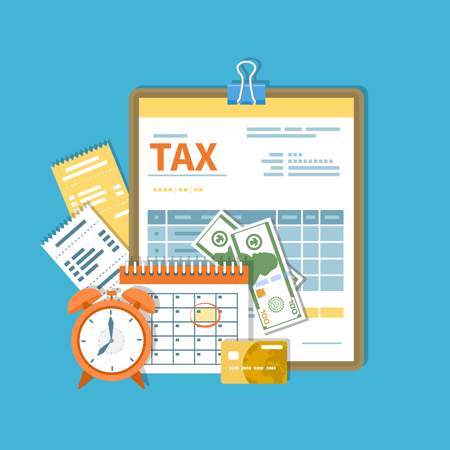 Introduced in 2013, Universal Credit aims to reform the benefits system by replacing existing income-related benefits, namely:
Introduced in 2013, Universal Credit aims to reform the benefits system by replacing existing income-related benefits, namely:
- Housing Benefit
- Income Support
- Child Tax Credits
- Working Tax Credits
- Income-based Jobseeker’s Allowance (JSA)
- Income-related employment and support allowance (ESA)
Under this scheme, recipients who are out of work or on a low income will receive a single monthly payment to assist with living costs.
The objective of Universal Credit is to simplify the welfare system, help get people back into work, reduce in-work poverty and help detect fraud and error. However, it isn’t without controversy. The Government has made a vague promise that existing tax credit recipients will not lose out through Universal Credit, and the Secretary of State for Work and Pensions announced that the Department of Work and Pensions (DWP) had succeeded in helping 3.4 million people find employment since 2010.
But other institutions are less optimistic. The Institute of Chartered Accountants in England and Wales (ICAEW) said that ‘by and large, the new system will be less generous to claimants than tax credits’.
What’s the difference between Universal Credit and the existing Tax Credit system?
There are some key differences between the systems:
- Claimants will now receive a single monthly payment
- More people will be able to manage their claim online
- It will be available to those who are in work but have a low income
The amount of the single monthly payment will depend on an individual’s circumstances. It is made up of a single monthly allowance, supplemented by additional elements for childcare, limited capability for work, housing and carers.
The single monthly payment is supposedly designed to reflect the salary system of the vast majority of employed people receiving wages monthly. According to the government, Universal Credit will thus encourage claimants to take more responsibility for their finances and also prepare people for the transition into work.
What do you need to do if you currently receive Tax Credits?
The short answer is nothing. HMRC has made it clear that the Tax Credit Office will contact those affected by the changes. At present, there are more than one million people on universal credit and the government’s plan is to roll it out for almost seven million people by 2023. To find out if you’re eligible to receive Universal Credit, see this step-by-step guide on the gov.uk site.
Will Universal Credit affect child maintenance payments?
Universal Credit will not replace Child Benefit, which recipients will still receive in addition to Universal Credit. This will also not affect the amount of Universal Credit that claimants are entitled to. In addition, Universal Credit will not affect Bereavement Allowance, Carers Allowance, Disability Living Allowance, Maternity Allowance, among others.
Is Universal Credit taxable?
Universal Credit is a tax-free state benefit, which means the monthly payments are not considered taxable income. While other benefits may be taxable, the government supports Universal Credit recipients through this state-benefits system.
For more information, the DWP has produced an FAQ document which is useful. Alternatively, you can contact our tax accountants to if you have any questions.
Published on 09 Jan 2013 and updated on 06 Feb 2019, this blog is intended to provide information of general interest about current business/ accounting issues. It should not replace professional advice tailored to your specific circumstances.
HMRC Legal Powers
 Many people remain unaware that in an age where data protection and privacy are big issues, such rights do not always exist when it comes to tax affairs.
Many people remain unaware that in an age where data protection and privacy are big issues, such rights do not always exist when it comes to tax affairs.
In this area, HMRC has very wide powers to conduct surveillance and intrusively snoop on suspected tax dodgers.
Most would agree that tax evasion is a very serious issue, which should be investigated by HMRC if there’s a suspicion of fraud and criminal activity. But not everyone agrees when HMRC uses its power to collect more tax from innocent workers in order to minimise its tax gap, raising concerns on privacy infringement.
The power of HMRC comes from Schedule 36 of the Finance Act 2008, which allows HMRC to obtain information and documents from taxpayers and gives them the power to inspect businesses. According to HMRC, their criminal investigation powers allow them to:
- Apply for orders requiring information to be produced
- Apply for search warrants
- Make arrests
- Search suspects and premises following arrest
In July 2018, HMRC published a consultation proposing reforms to the existing legislation. Among other suggestions, they proposed to remove tribunal approval for third-party notices and create separate rules for third-party information requests.
While HMRC claims the reforms are meant to cut costs and improve efficiency, many businesses and taxpayers are concerned that this may remove some of the necessary checks and balances in place, which are particularly important when the requests relate to banking information.
How far can HMRC go in investigating?
While future changes are yet to be determined, at present, HMRC has the following powers to catch tax dodgers:
Their powers include:
- The ability to track a suspected tax evader’s web browsing.
- The ability to intercept and read private emails or eavesdrop on telephone calls, only permitted with a warrant.
- The potential to bug an office, house or car.
- The power to access credit reference information in order to compare alleged levels of income, information and documents given to credit companies and spending habits which may not match the information given in tax returns.
- The right to visit third parties.
- The ability to pass on any other relevant information regarding tax issues to other arms of the organisation.
What HMRC are not authorised to do
Be aware of your rights:
- HMRC cannot force entry or physically search by hand, they can only inspect by eye.
- They cannot make an unannounced visit without it being authorised by a senior officer.
- They cannot visit domestic premises.
- They cannot compel a taxpayer to answer questions.
- They must make it clear why a taxpayer is being investigated. They cannot investigate any other matter that they haven’t provided notice about.
While HMRC officers have clear restrictions under Schedule 36, it has also been disputed that these officers can take advantage if a taxpayer voluntarily waives their rights.
Tax investigations
If you’re being investigated by HMRC, contact our experienced team of accountants and tax advisors today. Our tax investigations services include:
- Liaising with the local tax office
- Compliance reviews of PAYE and NI
- Investigations of VAT issues
Get in touch today on 020 8108 0090 or contact us via our Online Form to arrange a complimentary, no obligation meeting.
This post was first published on 10 02 2013 and updated on 06 02 2019.
This blog is a general summary. It should not replace professional advice tailored to your specific circumstances.
Annual Investment Allowance explained: Tax relief for small businesses
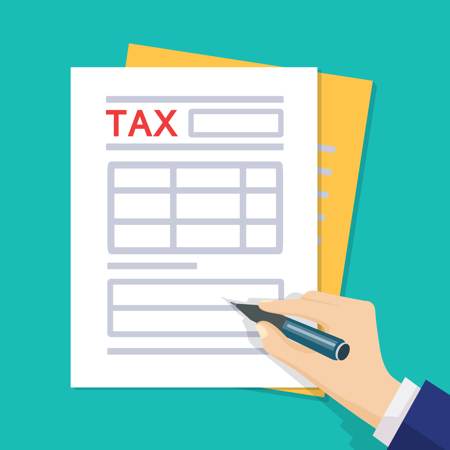 The Annual Investment Allowance (AIA) is a form of tax relief that allows businesses to claim 100% of expenditure on specific categories of machinery and plants. The allowance is intended to encourage small to medium-sized businesses to invest, with a vision to stimulate growth in the UK economy.
The Annual Investment Allowance (AIA) is a form of tax relief that allows businesses to claim 100% of expenditure on specific categories of machinery and plants. The allowance is intended to encourage small to medium-sized businesses to invest, with a vision to stimulate growth in the UK economy.
What has changed?
The government has recently made a sizeable increase to the claim allowance, from £200,000 to £1,000,000 for the next two years. There have been many changes to the AIA since its introduction in 2008 but this is the most significant.
This large increase is designed to encourage your business to invest in the equipment that will help you grow. At Tax Agility, we have a team of specialised accountants for small business with years of experience in helping businesses to grow. We’re here to help you understand how your business can make the most of 2019, starting with your AIA claims.
Changes to the AIA
What can be claimed?
You can claim on ‘plant and machinery’ used in the course of your business. This can include computers, telecommunication and surveillance systems, safes, fire alarms and burglar alarm systems.
How does it work?
If you purchase ‘plant or machinery’ that qualifies, you can deduct the cost of that asset from your business’ profits before calculating tax on your profit.
For example, if you bought a £2,000 computer for your business and your annual profits came to £55,000, you would only pay tax on £53,000. (£55,000 - £2,000 = £53,000)
Get help from tax accountants
Take advantage of this new increased allowance and don’t miss out on other forms of tax relief. At Tax Agility, our small business accountants are happy to discuss tax relief with you.
Apart from tax relief, you may also be interested in:
- Accounting and bookkeeping specific to small business
- Tax specific to small business
- Payroll service for small business
- VAT specific to small business
Get in touch on 020 8108 0090 or use our Online Form.
This blog is a general summary. It should not replace professional advice tailored to your specific circumstances.
How does HMRC expose tax evasion and avoidance?
 Over the last few years, the UK government has been making plans to clamp down on tax avoidance and tax evasion, with the latest package of measures announced in Budget 2018.
Over the last few years, the UK government has been making plans to clamp down on tax avoidance and tax evasion, with the latest package of measures announced in Budget 2018.
Also, the new strict liability offences for offshore tax evasion came into effect in 2018. This means failing to declare offshore income of more than £25,000 is now a criminal offence – the term ‘strict liability’ means HMRC doesn’t need to prove ‘mens rea’, that a taxpayer has criminal intent before they can be convicted of a criminal offence such as tax evasion.
In this post, we look at what HMRC can do to catch those who aren’t paying their fair share of tax and discuss a few methods which HMRC uses to find tax dodgers.
Connect
Introduced in 2010, Connect is the name of HMRC’s powerful computer system, designed to detect those who skip out on tax. It takes in vast amounts of financial data from websites, banks and other online sources, and then compares them against tax returns to look for undeclared income. For example, if you recently purchased an expensive car but have a low declared income, then Connect would see that purchase as unlikely and raise a flag.
As of 2017, HMRC can also force online platforms such as Airbnb and Amazon to relinquish customer data if it may help in catching tax evaders, and they are now cooperating with offshore tax havens to gather even more information. This makes it almost impossible to hide information from the system.
The “Offshore, Corporate & Wealthy” unit
The ‘Offshore, Corporate and Wealthy’ unit is a team of people tasked with tracking down those who use offshore accounts to avoid tax. They form part of HMRC’s Fraud Investigation Service, and look for either individuals or companies that hide significant wealth offshore.
The 2018 budget also stated that the government will publish an updated offshore tax compliance strategy, building on the progress already made in tackling offshore tax evasion.
Fraud hotline
People can give HMRC a call to report tax fraud and tax evasion. The numbers are 0800 788 887 (UK) and 0203 080 0871 (outside the UK). You can also report it online, or write to HMRC at Cardiff CF14 5ZN. Some informants are rewarded, and according to a post published by Financial Times, in the 2017-2018 tax year, there were 40,000 tip-offs and HMRC rewarded these informants with £343,500.
Data leakage
From Panama Papers to Paradise Papers, these documents revealed how rich people and close associates of many current and former heads of state and government launder money and avoid tax. Even the Queen was dragged into the scandal when the Paradise Papers revealed that millions of pounds from her private estate Duchy of Lancaster were invested in a Cayman Islands fund, sheltered from UK tax. According to ICAEW (Institute of Chartered Accountants in England and Wales), as a result of these leaks, HMRC has investigated many individuals in relation to tax evasion.
Contact Tax Agility
As HMRC aims to minimise the ‘tax gap’, ie the difference between the amount of tax it should receive vs what it actually received, it will continue to strengthen its policies and enhance the methods it uses to stop tax evasion.
In the event that you have forgotten to notify HMRC about your offshore income, get in touch with one of our experienced tax accountants right away, so we can work with you to notify HMRC and ensure that the return is correct.
To find out more about how we can help save you money, get in touch on 020 8108 0090 or fill out our Online Form.
If you found this article useful, you might want to check out:
This article was first published on 19/12/2012 and updated on 23/01/2019.
This post is intended to provide information of general interest about current business/ accounting issues. It should not replace professional advice tailored to your specific circumstances.
Self Assessment penalty: what happens if you miss the self assessment tax return deadline?
 When it comes to Self Assessment, there are two things you must know – the deadlines for paper and online tax returns respectively, and the penalties if you miss the deadline.
When it comes to Self Assessment, there are two things you must know – the deadlines for paper and online tax returns respectively, and the penalties if you miss the deadline.
The gov.uk site breaks down the deadlines for you:
- Self Assessment paper tax returns by 31 October
- Self Assessment online tax returns by 31 January
- Pay the tax you owe by 31 January
Also, for those who are self-employed or sole trader, not self-employed or registering a partner or partnership, the deadline to register for Self Assessment is 5 October.
This post looks at what happens if you miss the deadline for submitting your tax returns or paying your bill.
Self Assessment penalties
If you miss by one day and up to the first three months, you’ll be charged £100, no matter what. Even if you do not owe any tax, you can still be fined.
After the initial three months and up to six months late, you’ll be charged £100 plus £10 each day up to a 90-day maximum of £900. In short, the maximum fine could be £1,000.
After the initial six months and up to nine months late, you’ll be charged the penalty above, plus a fine of either £300 or 5% of the tax due, whichever is higher.
You will pay more if it is later and the HMRC site has a page where you can estimate your penalty for late Self Assessment tax returns and payments.
Appealing the penalty
You can appeal the fine if you have a valid reason or reasonable excuse for submitting the return late.
According to the gov.uk site, the following may count as a reasonable excuse:
- Death of a partner or a close relative shortly before the tax return or payment deadline
- An unexpected stay in hospital
- A serious or life-threatening illness
- Failure of your computer or software
- HMRC online service issues
- A fire, flood or theft
- Postal delays
- Delays due to a disability you have
HMRC will not consider your appeal if your excuses include someone else had failed to submit your return, you didn’t have enough money to prevent a bounced cheque, you found the HMRC online system too difficult to use, you didn’t get a reminder from HMRC or you made a mistake on your tax return.
Sort it today with Tax Agility
Tax returns can be a daunting process and submitting a day late can see you paying a financial penalty. Speak to our expert tax accountants from Tax Agility to help you get it right and file your return before the deadline.
To find out more, or to take advantage of our free, no obligation first meeting, get in touch on 020 8108 0090 or fill out our Online Form.
This article was updated on 16 Jan 2019.
This post is intended to provide information of general interest about current business/ accounting issues. It should not replace professional advice tailored to your specific circumstances.
Property Tax
 Tax is a complicated subject and property tax is no exception. If you own a property or planning to own one, tax planning becomes important because buying, selling or renting out your property is likely to expose you to some form of property tax. In this article, our specialist tax accountants explain:
Tax is a complicated subject and property tax is no exception. If you own a property or planning to own one, tax planning becomes important because buying, selling or renting out your property is likely to expose you to some form of property tax. In this article, our specialist tax accountants explain:
- Stamp Duty Land Tax
- Capital Gain Tax
- Tax on rental income
Stamp Duty Land Tax
When you buy property, you must pay Stamp Duty Land Tax (SDLT). The amount you pay depends on several factors such as if you’re replacing your main residence, buying an additional property, buying a non-residential property, and if the property is freehold or leasehold.
If you are a first-time buyer, then you don’t pay SDLT on properties up to £300,000, and only 5% SDLT on anything between £300,001 and £500,000. If your property is worth more than £500,000 then you will be taxed as though you had already bought a home.
A common question relating to SDLT is if one can reduce the SDLT liability by using a company to purchase a property. The answer is generally no because HMRC applies a 15% SDLT on residential properties costing more than £500,000 if bought by a company, although there are conditions where the 15% rate does not apply, such as when the company acts in its capacity as a trustee of a settlement and purchases a chargeable interest in a residential property. To find out how you can reduce your SDLT liability legitimately, it’s best to discuss your situation with one of our experienced Tax Accountants.
Capital gains tax on property
Whenever you sell a property that has appreciated in value, you may be taxed on the profit that you make. This is capital gains tax and it typically applies to property that’s not your main home, such as buy-to-let property, business premise, land and inherited property. If you sell your home or if you live abroad, different rules will apply.
Like other taxes, there are situations where you can get a tax relief or don’t have to pay capital gain tax on property. For example, you do not need to pay tax on assets you give to your spouse or a charity as a gift.
In the event that you are liable for capital gains tax, how much you need to pay depends on how much capital gains tax allowance you have in that financial year. The good news is, the amount of annual capital gains tax allowance, aka the annual CGT exemption, has been increased by the government over the years and for the 2019/2020 tax year, you can make tax-free capital gains of up to £12,000 and couples who jointly own assets can combine this allowance.
Get in touch with us if you would like to understand more about capital gains tax and the relief associated with it.
Tax on rental income
In its simplest sense, you pay income tax on the profit you make from renting out your property. Additionally, you can also deduct finance cost (mortgage interest, interest on loans to buy furnishings, overdrafts) from rental income, but HMRC has begun to restrict this from 2017 with a mixture of old and new rules and from the tax year 2020-2021 onwards, as a residential landlord, you will get a flat rate of 20% deduction of these costs from your tax liability. The upshot of this is you will be paying more tax and receiving a smaller net profit from your rental income, particularly if you’re a landlord who already has a higher income.
One legitimate tax-efficient way to handle tax on rental income is to set-up a limited company and take advantage of corporation tax rates and dividend tax rates, which are lower than income tax and capital gains tax rates.
Contact the experts
Property tax is immensely complicated and there are numerous reliefs subject to specific conditions which may not be obvious to a property owner. At Tax Agility, our tax accountants excel in personal tax planning, and we’re always available to discuss income tax, trusts and estates, inheritance tax and capital gains tax with you.
Get in touch on 020 8108 0090, or contact us via our Online Form.
This post is intended to provide information of general interest about current business/ accounting issues. It should not replace professional advice tailored to your specific circumstances.


